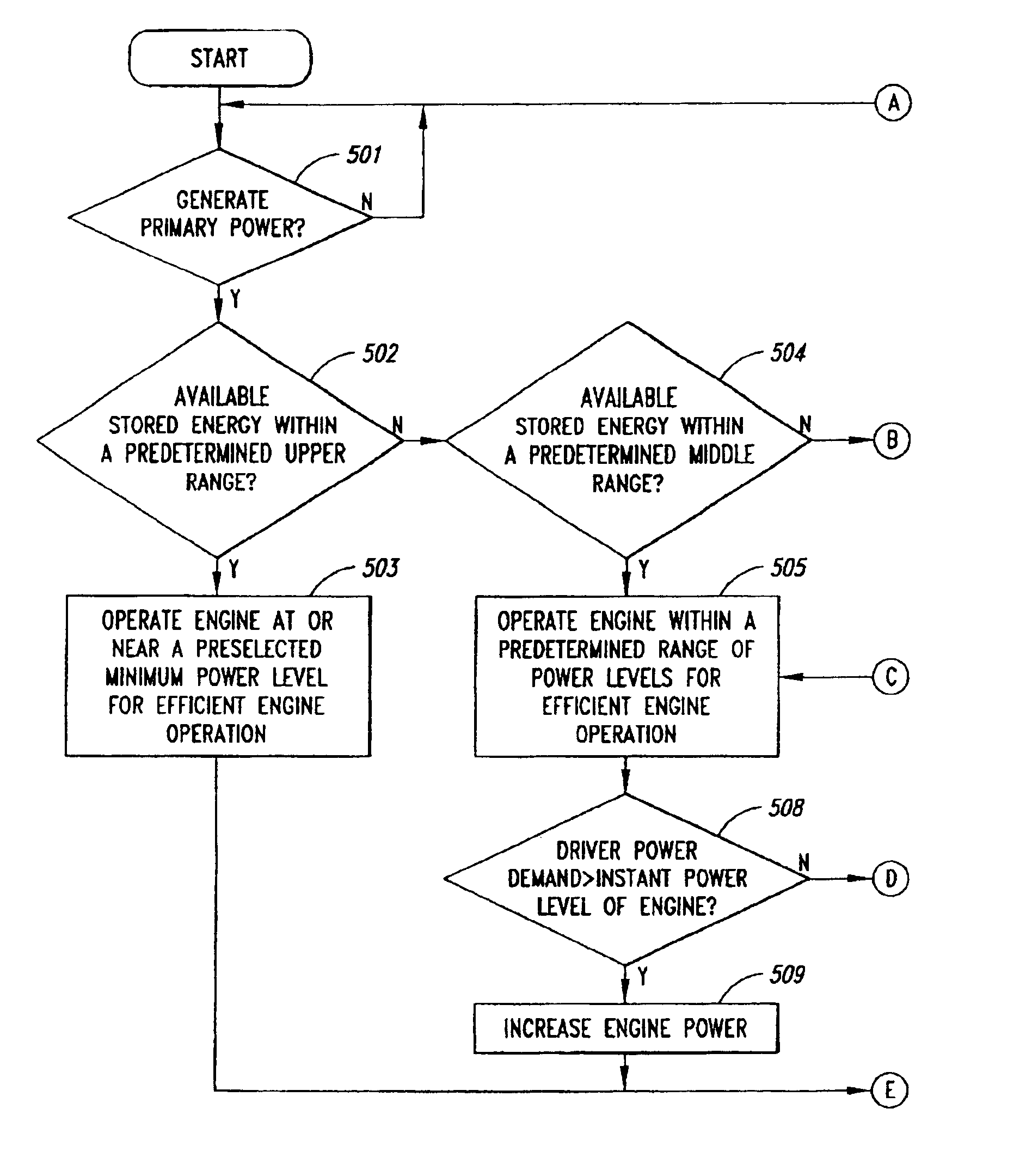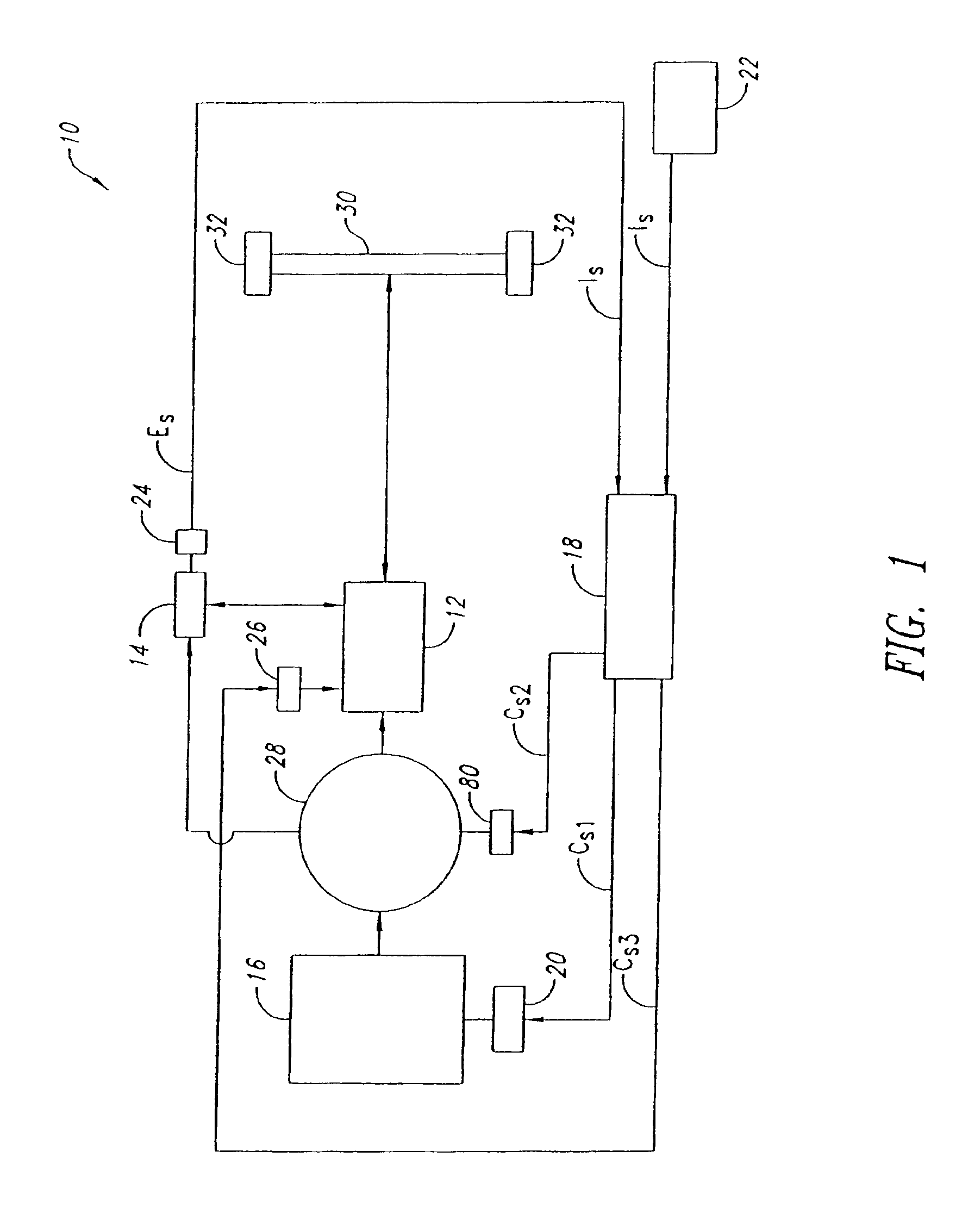Methods of operating a series hybrid vehicle
a hybrid vehicle and hybrid technology, applied in the direction of machines/engines, battery/cell propulsion, jet propulsion mounting, etc., can solve the problems of limited design choices, design choices affecting the size and calibration of engines in series hybrid vehicles employing previous generation energy storage devices, and achieve the effect of furthering the vehicle's overall energy efficiency gains
- Summary
- Abstract
- Description
- Claims
- Application Information
AI Technical Summary
Benefits of technology
Problems solved by technology
Method used
Image
Examples
Embodiment Construction
[0024]In the following description, certain specific details are set forth in order to provide a thorough understanding of various embodiments of the invention. However, one of ordinary skill in the art will understand that the invention may be practiced without these details. In other instances, well-known structures associated with hybrid vehicles have not been shown or described in detail to avoid unnecessarily obscuring descriptions of the embodiments of the invention.
[0025]The term “primary power source,” as used herein, denotes an engine such as an internal combustion engine (e.g., a compression ignition engine, a spark ignition engine, or gas turbine engine) or an external combustion engine (e.g., a Stirling engine), a fuel cell, or other primary energy converter.
[0026]The term “variable displacement engine,” as used herein, refers to a multi-cylinder engine wherein each of the cylinders is selectively operated (individually or as a group) such that the engine's total displac...
PUM
 Login to View More
Login to View More Abstract
Description
Claims
Application Information
 Login to View More
Login to View More - R&D
- Intellectual Property
- Life Sciences
- Materials
- Tech Scout
- Unparalleled Data Quality
- Higher Quality Content
- 60% Fewer Hallucinations
Browse by: Latest US Patents, China's latest patents, Technical Efficacy Thesaurus, Application Domain, Technology Topic, Popular Technical Reports.
© 2025 PatSnap. All rights reserved.Legal|Privacy policy|Modern Slavery Act Transparency Statement|Sitemap|About US| Contact US: help@patsnap.com



